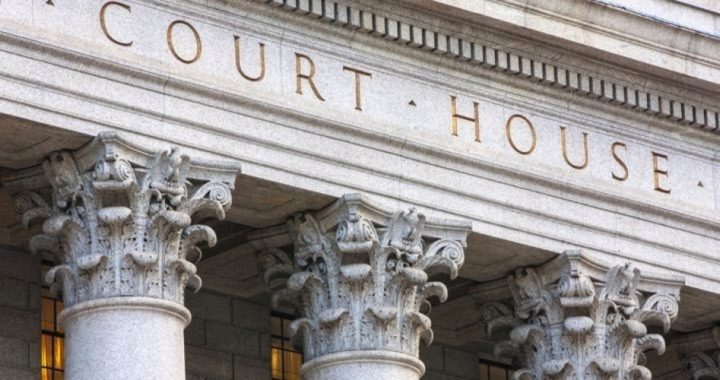
With the addition of another five nominees to his list of conservative judges, President Trump now has 25 people to consider as soon as another vacancy opens on the bench of the Supreme Court. That could happen soon as rumors persist that Justice Anthony Kennedy, age 81, is considering retiring at the end of the court’s present term. In addition, two liberals are deep into their dotage: Ruth Bader Ginsburg is 84 while Stephen Breyer is 79.
Given the opportunity, Trump’s picks would likely influence legal jurisprudence in the country for decades if not generations. On Friday the president added two appellate judges who were nominated by him earlier this year and confirmed by the Senate: Amy Coney Barrett and Kevin Newsome. The other three include Brett Kavanaugh, who presently sits on the U.S. Court of Appeals in Washington, Britt Grant, a Georgia Supreme Court justice, and Patrick Wyrick, an Oklahoma Supreme Court justice.
According to White House Counsel Donald McGahn, these are all “committed originalists and textualists,” adding that “they all have paper trails. They all are sitting judges. There is nothing unknown about them. What you see is what you get.”
The opportunity to reverse decades of liberal interpretations and inventing of rights not found in the Constitution is huge, according to Leonard Leo. The executive vice president of the Federalist Society and an informal advisor to the president, Leo said:
This president has an opportunity to potentially fill as many as 40 percent of the seats on the federal bench. And that will just be transformative.… [Their influence] will last 40, 50 years and will have an enormous impact on the future of our country.
Democrats know this and are doing everything they can to stall, delay, and otherwise obstruct the Senate confirmation of some 175 nominees that the president has already nominated to fill vacancies in lower courts. As a result the Senate has only been able to confirm two or three of them every week.
But with the advent of the “nuclear option” put in place by the Senate Democrats in 2013 (and used when Democrats tried to block confirmation of Neil Gorsuch in April), and now with the ignoring of the “blue slip” rule by the head of the Senate Judiciary Committee, Chuck Grassley (R., Iowa), those delaying tactics will have less of an impact.
It will be recalled that the “nuclear option” essentially ends filibusters by a minority party, which in the past had the effect of blocking permanently the confirmation of a court justice. It required the Senate to have 60 votes in order to shut off a filibuster, but now only 51 are required. As Grassley noted, “The Democrats seriously regret that they abolished the filibuster, as I warned them they would. But they can’t expect to use the blue-slip courtesy in its place. That’s not what the blue slip is meant for.”
The “blue-slip” refers to blue-colored slips of paper on which Senators from the state of residence of a federal judicial nominee are allowed to give their opinion of that nominee: support or oppose. There is a third option: Don’t return the slip. On Thursday Grassley announced that his committee would hold hearings on two of Trump’s nominees over the objections of two senators: Al Franken (D-Minn.) and John Kennedy (R-La.). Neither of them had returned their blue slips, which in the past would have all but blocked the Senate from voting on their confirmations.
Such behaviors are calling out the wrath of liberals who see their chance to influence jurisprudence fading away. The Washington Post called the moves “stack[ing] the courts” which “sharply cuts Democratic efforts to limit the judiciary’s ideological shift to the right.”
What liberals are referring to isn’t so much a shift to the “right” but a restoration of common sense in ruling on important cases at the highest judicial level in the country. In a general sense, “originalism” is a way of interpreting the Constitution based upon what the writers of it intended it to mean. This is far different from that espoused by liberal Justice Breyer, who holds that in order for constitutions to endure over time, their interpretation must therefore be “more flexible and responsive” to changing circumstances than by using the amendment process.
While there is wiggle room for interpreting the Constitution as an originalist, it is slight. Besides “original intent,” there is the “original meaning” theory, which is based on what reasonable persons living at the time of its adoption would have understood the ordinary meaning of the text to be. Supreme Court Justice Antonin Scalia fell into the second category, noting, “It’s not always easy to figure out what the provision meant when it was adopted. I do not say [originalism] is perfect. I just say it’s better than anything else.”
An Ivy League graduate and former investment advisor, Bob is a regular contributor to The New American magazine and blogs frequently at LightFromTheRight.com, primarily on economics and politics. He can be reached at [email protected].
Related article:
McConnell, Democrats Stalling Trump’s Conservative Judicial Nominees



